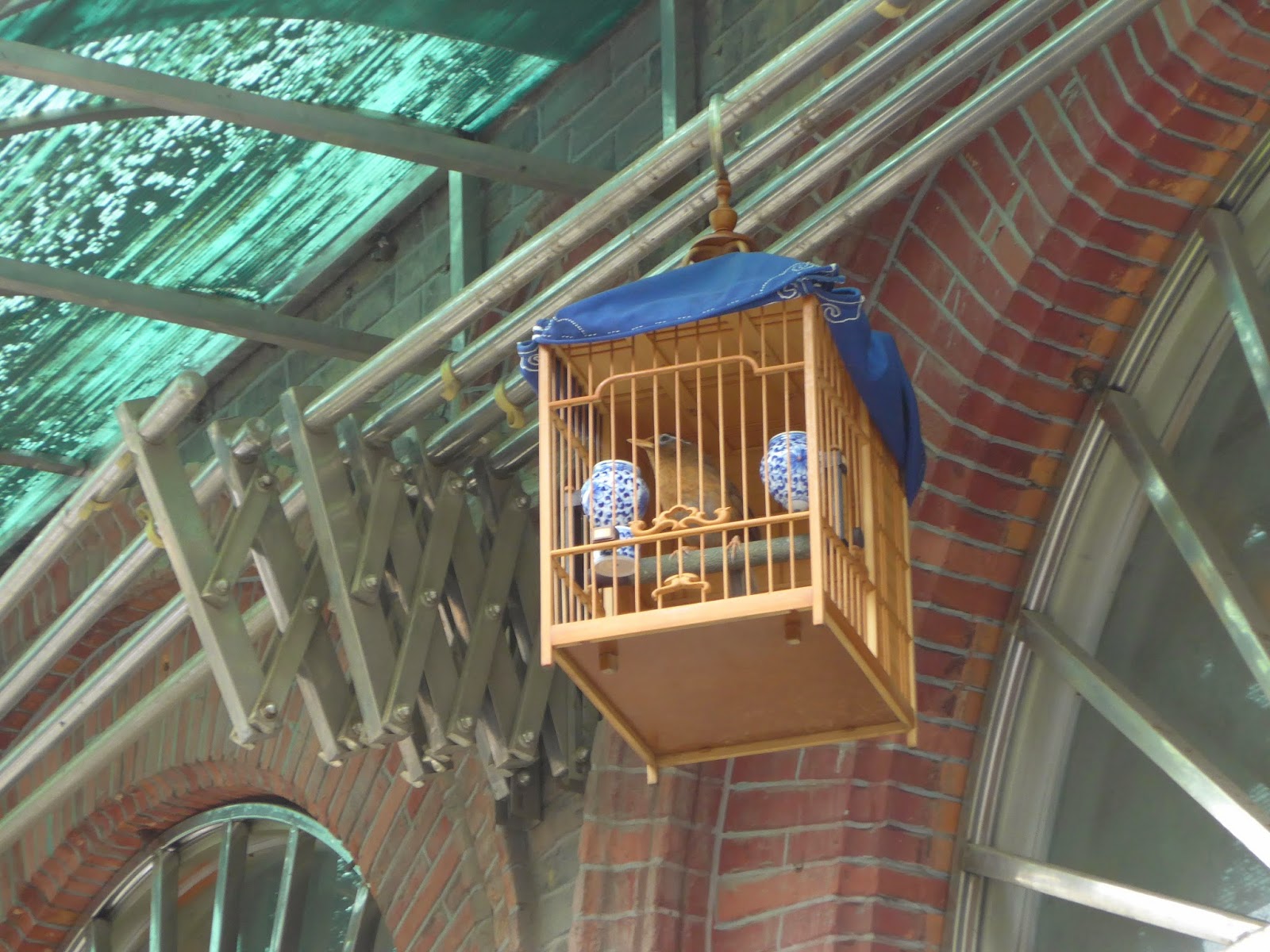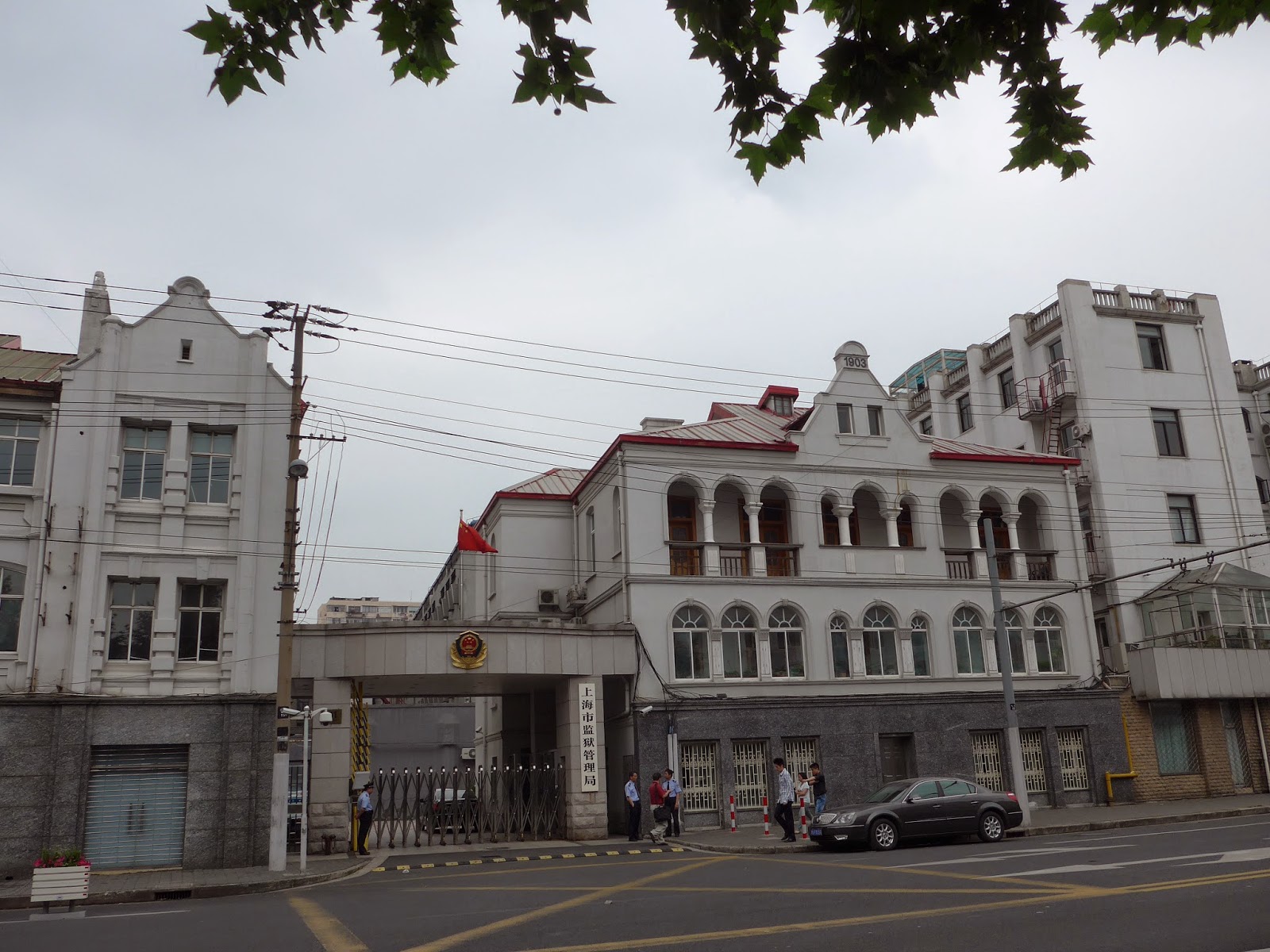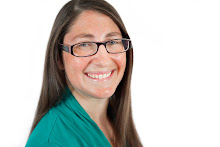One thing I missed on my first trip to China was experiencing the Jewish history in Shanghai. That may sound little strange, but believe it or not, there is a very rich Jewish history here in Shanghai. When we planned this trip I knew that the Jewish Shanghai tour was something we needed to do. We did a similar tour in Rome back in 2011 and enjoyed having a different perspective of the city and getting a little history lesson in.
It's getting more and more difficult for me to write this post given the current conflict in Israel with Gaza, and while I don't want to comment on that situation, I will say it is harder to write about the more difficult part of the Shanghai Jewish history which takes place during the Holocaust given the current world situation and a group's strong demand to erase my people. I pray for peace in Israel and the hope that some day the Palestinians can live without terrorists running their lives and using them as a puppet or ploy in the media.
But anyway, moving on to the Jewish story in Shanghai. Our tour started here at the famous Peace Hotel along the Bund. Although not originally called the Peace Hotel, it was originally built and owned by Victor Sassoon. He came from a Jewish family and had made his way from Baghdad to Shanghai, where he became very wealthy and successful. This was in the early 1900's.
Here are some pictures from inside. In the early 1900's, before the war, this place was well known for hosting the elite. Imagine Beverly Hills or New York City top spots for star sightings and this would be the equivalent in Shanghai.
This is Shanghai with a view of the Bund. The building with the triangle roof is the Peace Hotel.
This hotel is very well decorated and still looks like it could be the early 1900's.
Just for display now.
After we looked around the hotel, we headed to the Bund to have a little history lesson, presented by our tour guide Dvir. Dvir has been the guide for this tour for over 10 years now since moving to Shanghai from Israel for reasons related to his role in journalism (as a photojournalist). He has stayed and continues to do research on the Jewish history here, including the project of locating Jewish grave stones and reconnecting these with the families, hoping to one day have a memorial built and dedicated to these families.
Although the weather was a little hazy, the view of Pudong across the river from the Bund was impressive, as it is every time I see it in a movie or ad (the day after I sent my mom some pictures like this she received a Michael Kors add with an identical picture in it!).
Dvir told us about the 3 major waves of Jewish migration to Shanghai. Shanghai has always been an open port, making it a safe haven for many, including the Jews, who prospered in the first wave. That was the Jews coming from Iraq (1843-1920). The Sassoon and Hardoon families are the most well known. They eventually held a lot of real estate and building some of the buildings that remain most famous in Shanghai today (including the Peace Hotel). The Ohel Rachel synagogue is from this time, however, sadly, it is not open to the public anymore.
The next wave came from Russia (1920-1937). These families were not as wealthy as the Jews coming from Baghdad, but eventually had a thriving community, with the support of the Baghdadi Jews.
The final wave (not including the Jews that live there now, all of whom came more recently since the Jews residing here before the rise of Communism all left during that time period) came during World War II and were escaping the Nazi regime. This is the more difficult period to fathom, but amazing at the same time. While there was trouble in Europe, two men really helped Jews escape and make it safely to Shanghai. Although they were welcomed, it is important to remember that they were not given luxury conditions to live in. Although much better than conditions in many places in Europe, they still were required to live in a ghetto with poor sanitation and limited access to the outside world.
The two men known for their role in saving so many Jews are the Chinese man known as Feng Shan Ho and the Japanese man known as Chiune Sugihara (click on the links to read more about 2 of the most amazing men you may never have heard of). Thousands of Jews (actually more than 20,000) made their way, many with the help of those two men, to Shanghai and were able to live during the War in the Jewish Ghetto in Shanghai before moving on after the war ended. Many of these Jewish families now reside in Australia and some returned to Europe. There are stories (our guide shared with us) of the Germans coming here and requesting that the Japanese (their ally and the group that was occupying this area) take care of the Jewish problem. They were requesting the death of the escaped Jews, but according to our guide the Japanese did not abide by this because the Jewish people were not their problem, but that of the Germans. While they were allies, they did not seek the destruction of the Jews, so they kept them all in the Ghetto and considered the "problem" solved. They didn't make life easy for them in the Ghetto, but they didn't actively pursue mass slaughtering of the Jews in Shanghai, and for that I am thankful as I now reside in Japan where I feel little threat for being Jewish. The interesting part to this story is that the Germans were only concerned with the "stateless" Jews, so this did not include the Jewish families that came as part of the first and second wave of immigration. They were still allowed to live their lives freely and did not have to stay in the Ghetto. That's it for the history lesson for now, but I will fill more in with the pictures that follow.
This is looking back at the Peace Hotel, which has the green triangle on the top.
Here are some more pictures from around the Bund as we made our way towards the Jewish Ghetto area. You can see a lot of buildings are going up as this area is becoming more and more modern and populated.
Here Dvir is telling us about this old movie theater located in the Jewish Ghetto. This was used for social gathering. I believe this was originally the area where the Russian Jews lived but later they moved to other areas and this was part of the Ghetto, also known as the Hong Kou District of Shanghai.
People live in these homes still today, but this was all part of the Jewish area in Shanghai. The area was to be torn down but now said to have historical value (as part of the Jewish tours, which brings in some business). The outside was recently given a "face lift" because the Shanghai World Expo was here in 2010.
Here is a memorial park for the "stateless" Jews. It is the only recognition of the historical importance of this area.
This building was once featured in a (I believe it was) National Geographic article about Jewish Shanghai.
This building was once used for offices related to the Jewish people in the Ghetto, known as the Jewish Joint Distribution Center, who provided aid to the refugees here. This sign remains on the doorway.
This dog walking though the park was just too funny not to take a picture.
We walked a little further and entered the streets where the homes of the Jews here during World War II were located. It remains pretty dilapidated today and still mostly without running water and toilets inside.
I can't remember who, but this address belongs to someone who is now well known. Maybe it was someone famous in Australia, I believe a politician. His family lived here during the war before moving on to Australia.
Here is the alley way for one of the buildings here. Yes, people still live here in modern day in conditions similar to how people lived here during World War II when this was considered the Jewish Ghetto.
This, which looks really nice on the outside, is apparently a prison! The front is used as government buildings so that is why it looks so nice from this angle.
Our next stop was the Shanghai Jewish Refugees Museum.
This was originally a synagogue built by the Russians.
Here is a plaque with information on Ho Feng Shan, the Chinese man that saved thousands of Jews.
Here is the view of the synagogue again, which is now used as the museum and not an active synagogue.
This is a display inside the museum.
The neat thing about the museum is the walls filled with pictures and stories as told by survivors. Simply amazing stories from people that travelled all the way from Europe to Shanghai so that they could be safe. Many (or their children) have travelled back to Shanghai to see the museum and visit the places they once called home.
This is inside the Ohel Moishe Synagogue (the one that is part of the museum).
Upstairs seating area.
After the museum we headed to see the inside of a house that was once owned by a Jewish family. If I remember correctly this man ran the Jewish museum, but he has now passed and his son continues to open the home to show on the tour.
These pictures were from the walk to the neighborhood. You can see these are very poor conditions and many people still live here today. The man standing on the left is the town "guard" (AKA drunk) who became very angry with the man on the motorbike that wanted to come through and would end up disturbing our tour. It seems over the years he has become protective of our guide and his tour to show this house. He made this man turn around and go find another way to get to his destination. It was pretty funny to watch but we felt bad for the guy that had no idea why he was told he couldn't pass through.
It was dark inside the home and we were many people so I didn't get any pictures, but I can say the space was small. Although later on a Chinese family lived there, the conditions remained similar. They had different switches and meters so that each family (sometimes 3 families occupied the space, and still may) had control over their own electricity. The rooms were small and the space was dirty. I think even if they cleaned it would have remained this way. It was very interesting to get a look into what life would have been like for Jewish families living in Shanghai as refugees from Nazi Germany. In the end, having refuge in an open place like Shanghai, even though the German ally was there, created a unique method of survival for many European Jewish families. If you are ever in Shanghai I highly recommend this tour. If you are interested in learning more, make sure to click the links I provided within my text above and also check here, here, and here. Today there exists a Jewish community (and I have had Jewish friends that have lived there in recent years), but this is a newer group of immigrants, or rather expats as we may call them today. The Jews remaining after the war ended all left with the rise of communism and only in recent years as things shifted, changed, relaxed, or whatever, in China did Jews return to China. Really a fascinating tale!
The tour ended around lunch time so we headed to the mall near the hotel to grab a bite to eat before heading to a museum. This is a cute walkway with a fountain and crane sculpture by the mall.
We stopped at a place called Secret Recipe for lunch.
Ryan started off with some sort of soup.
I had a curry laska type of dish. I can't remember exactly what was in it and the menu on the website can't even help me recall! That's ok, it was tasty. I believe it was fresh fish in the dish.
And some onion rings.
Next we went to the Shanghai Museum, which is located in People's Square.
Here are the very nice stairways inside.
Lots of sculptures to look at.
Very intricate stone carvings.
Since I love dragons I enjoyed seeing all of the antiques and sculptures with dragons on them.
One of the floors housed a furniture display.
I really loved all of the details in the carving.
Again, very impressive carving details and I especially like the dragon.
Coin display. These are ancient coins from the various dynasties.
Old weapons.
After the museum we stopped by a massage place near the hotel and got some massages. China is very well known for massage as it is part of Traditional Chinese Medicine. They are especially well known for foot massages, or reflexology.
Here is the chair, although a little hard to tell, in the room where they did the foot massages.
Since it had been a long day and was getting late we decided to eat at the restaurant across the street from the hotel (sister restaurant to Kervan, where we ate two nights before) at J Steak and Pasta.
Bread to start, which was really the stuff they served us at the Turkish restaurant and not so much Italian. But tasty all the same!
Nothing fancy here, but it was pretty good. Ryan had this dish.
And I had pasta with veggies and seafood.
That was it for us for the day. We went back to the hotel to get some rest before another fun day of sightseeing. This time we headed out of the city to one of the nearby water towns. More to come on that!
I hope you enjoyed my post on Jewish Shanghai, which is a little known piece of Chinese and Jewish history that I think more people should know about. It is truly an amazing story and resulted in the preservation of so many Jewish families that are now still thriving around the world.
QUESTIONS: Did you know about the Jewish history of Shanghai? What was the last museum you went to?

















































































1 comment:
LOL THAT DOG!! Too funny. I haven't been to a Jewish museum in a long time, but when we were in Newport circa 2012 we did visit the oldest Synagogue in America (Torro I think). w00t!
Post a Comment